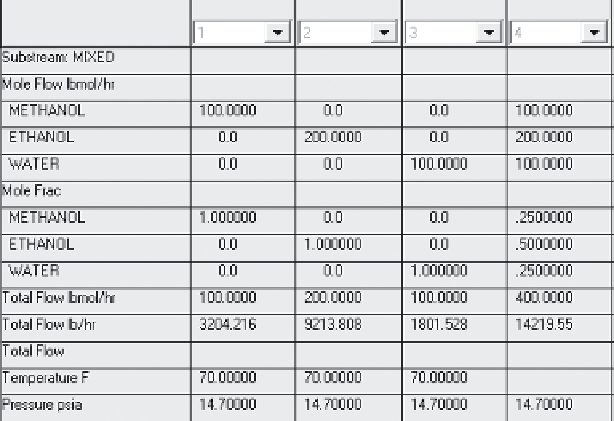Information Technology Reference
In-Depth Information
Figure 5.17
Results of Mixer5t.
5.7 WORKSHOPS
Workshop 5.1
Copy the file four3n.bkp, which will be the basis for using Aspen
Plus's Sensitivity Studies capability to determine the effect of the decanter's perfor-
mance with regard to the fraction of cyclohexane leaving the decanter in its aqueous
product, stream C. For the base case this specification is 0.02. The Sensitivity Studies
should vary this value between 0.01 and 0.10 in increments of 0.01. Select as tear
streams C and F. Make a reasonable estimate of the componential flows and solve the
flowsheet using the Newton convergence option. This becomes the base case solution.
This file is to be modified using the Sensitivity function. Select the following as the
dependent variables:
1. The total flow of stream G,
the cyclohexane-rich distillate recycled to the
decanter. Call it FLOWG.
2. The flow of cyclohexane in stream G. Call it FLOWGC.
Plot the results. If the pipeline in which G is to flow is limited to 300 lb/hr, what is
the fraction of the cyclohexane entering the decanter that leaves in stream C?
Workshop 5.2
Using Workshop 5.1 as a basis for solving Workshop 5.1 by means
of the Design Specification capability of Aspen Plus, delete the Sensitivity function and
replace it with Design-Spec. Vary the decanter performance with regard to cyclohexane
in stream C and use it as brackets for the iterations 0.01 and 0.10. Set up the design
specification such that the total flow rate of stream G is 300 lb/hr with a tolerance of
0.1 lb/hr. What is the fraction of the cyclohexane entering the decanter that leaves in
stream C?










